Manuae National Park: Rebuilding our socio-ecological production landscape to support sustainable development and nature conservation
31.08.2025
SUBMITTING ORGANIZATION
Manuae Enua Conservation Trust
OTHER CONTRIBUTING ORGANIZATIONS
Proprietors of Manuae Incorporated (PMI) as owners of Manuae
DATE OF SUBMISSION
05/05/2025
REGION
Oceania
COUNTRY
Cook Islands
KEYWORDS
Indigenous land management; socio-ecological production landscapes and seascapes (SEPLS), knowledge sharing, sustainable development, biodiversity conservation.
AUTHORS
Teuira Ka (Chair of the PMI-MECT)
Dr Graham Wragg (Technical Advisor to the PMI-MECT)
LINK
Summary Sheet
The summary sheet for this case study is available here.
A. Background
Our metua (ancestors) were removed from our island and settled on neighbouring Aitutaki Island in the 1820s. After our removal our homeland was exploited by commercial companies as the largest coconut plantation in the Cook Islands. Since our removal we have continued to hold on to our home island emotionally and culturally.
In 1983, after a unanimous vote of landowners in support, the Cook Islands High Court established the Manuae Atoll indigenous landowners’ management committee (Proprietors of Manuae Incorporated – PMI). This was triggered by the local communities’ serious concerns for the wellbeing of Manuae, especially as the atoll was suffering from an increasing number of visitors, many of whom were poaching endangered wildlife to sell to restaurants in the Cook Islands and overseas.
In 2022 the PMI begun the task of restoring Manuae’s socio-ecological landscape and to actively engage in biodiversity conservation by establishing a wholly-owned not-for-profit NGO (Manuae Enua Conservation Trust – MECT). The MECT’s task is to ensure that: our cultural heritage is secured for many generations to come; that the island becomes a powerful tool for our economic empowerment; and the island increasingly becomes a haven for all types of biodiversity.
Manuae is one of the largest uninhabited atolls in the South Pacific. It comprises two large vegetated motu surrounded by a large lagoon. Manuae is situated between Rarotonga Island and Aitutaki Island in the Cook Islands (both large populated islands). Manuae supports a healthy range of atoll specialist native vegetation and a high diversity of ecological niches, including freshwater lakes and saline marshes. It offers ideal nesting habitat for many different seabird and landbird species; extensive nesting beaches for sea turtles; an abundance of giant clams; and has a healthy population of coconut crabs.
As the representatives of the indigenous landowners, we are continuing to actively develop Manuae’s potential as an ecotourism destination in balance with our role as the guardians of our island’s wildlife.
The restoration of the islands’ socio-economic production landscape is central to our success. Our strategies and actions are informed by our continuous engagement with both science and traditional knowledge. This is reinforced by adopting the lessons from many other cultural and environmental enhancement projects worldwide, including tapping into the extensive library of information available from the Satoyama Initiative and other online resources.
B. Socioeconomic, environmental characteristics of the area
We represent over four thousand people, all of who are descendants of the original inhabitants of Manuae Atoll. Our landowners (equal numbers of men and women) are recorded in detailed court documents that are updated on a regular basis. We have recently approved a plan of action for the conservation of Manuae. Our plans reflect extensive community feedback gathered following a vigorous public awareness process on the future of our island.
At present, the endangered wildlife of uninhabited Manuae Atoll is poached and illegally sold for profits. In response to this ongoing threat to the island’s biodiversity we need our rangers to be stationed on our island all year round.
We are seriously concerned about the continuing decline in our traditional medicine, arts, crafts, and fishing techniques. The body of indigenous and traditional knowledge about our history and our land has been eroding over time, which started with the relocation of all the original landowners away from Manuae to other islands. This body of knowledge is orally passed down through the generations – traditional expressions and know how, traditional medicine and craft, traditional environmental calendar, indigenous weather watch knowledge, indigenous fishing methods to name a few. Currently, some are being practiced by a few individuals, sadly some are lost, so there is an urgent need to revive and transfer this knowledge on to future generations to prevent them being lost forever.
C. Objectives and rationale
Funding is required to help us reclaim our ancestral homeland; to manage our island sustainably for the long-term empowerment of our local community; and to rebuild our island’s socio-economic production landscape, as this can support the livelihoods of all who will be living on our island in future years.
As Manuae is a coral atoll, resilience to rising sea-levels is essential for its persistence. The restoration of the atoll will restore the natural nutrient cycles present on islands with large seabird populations that existed before the arrival of humans. This project will enhance the resilience of the atoll against rising sea-levels by restoring key mediators of atoll robustness, including the land-sea connectivity driven by seabirds and native forest dynamics. Our restoration of Manuae will have an increased and ongoing carbon capture impact with global environmental benefits.
D. Detailed description of activities
Manuae Atoll has the largest and densest populations of giant clams and coconut crabs of anywhere in the Cook Islands. Currently, there is a very serious problem with people poaching these species. These protected and endangered species are currently for sale in restaurants and to the public, including on Aitutaki, Rarotonga, New Zealand and Australia. As a result of this poaching, giant clams have been in rapid decline and coconut crabs are becoming very rare. Without our rangers living on the island the continued destruction of its wildlife is guaranteed. The problem has become significantly worse in recent years as the island is now easily accessible by fast modern boats.
We, as the islands indigenous landowners, are firmly resolved to put in place active conservation measures, if not, then the destruction of the island’s fragile ecology is inevitable, and this will fatally impact Manuae’s potential as a world-class wildlife sanctuary, which is a major drawcard for ecotourism worldwide. Wildlife ecotourism is one of the few sustainable economic opportunities for local people who are living on remote islands in the middle of the Pacific Ocean.
Support is needed to construct the essential infrastructure that would allow us to transition into actively managing Manuae for conservation, and hence support our social, cultural and economic self-sufficiency.
Long term goals include:
- Construction of housing for wildlife rangers and education staff
- Construction of a traditional “house of learning” education centre
- Re-establishment of tradition food plants
- Establishment of conservation zones – including fully protected no-take areas
- Invasive species eradications and reforestation where needed
- Installing a solar power system, toilets, water tanks, and septic systems
- Restoring the historic “Managers House” as a museum
- Purchasing communications equipment
- Producing quality video content for the media and our website
We need to ensure that our conservation staff (rangers, teachers, foresters etc) can safely live on our remote island and conduct their conservation and education activities in an effective way. A safe and healthy home on our island, with clean water, good communications, and 24/7 electrical supply, will give many opportunities for our future leaders to learn and upskilled in the areas of applied conservation and ecotourism.
E. Results and lessons learned
The MECT is an excellent example of a landowner initiated and led project taking direct action to transition our customary land (an abandoned island) to become an important tool for our socio-economic empowerment (a National Park). This project is a first of its kind in the Cook Islands and will be inspirational to the many hundreds of other indigenous landowning groups in the region.
The conservation of Manuae is an urgent priority for us as landowners. This direct conservation action approach is constantly being supported and reinforced by the local community during public awareness meetings and as feedback after press releases on the future of our island.
The project will:
Recruit from within the community for the many types of work opportunities on our island; Give equal opportunities (for men, women, youths etc) to train as wildlife rangers, teachers, foresters, guides, etc;
Building materials will be purchased from local hardware companies and local builders, plumbers, electricians, etc will be employed to construct the infrastructure.
We recognise the power of mentorship, and we will ensure that skills and knowledge are transferred from all aspects of the project to those being mentored.
Lessons Learned include:
- The essential need for landowner control of decision making
- Community empowerment is at the heart of sustainable development
- The central place of traditional resource management practices
- The power for good of multi-stakeholder partnerships (community & govt)
- The importance of a bottom-up approach to decision making
- Relying on both western science and traditional knowledge
F. Key messages
As the owners of Manuae, our overarching challenge is to sustainably rebuild the socio-economic production landscape of Manuae and balance this with active measures for effective environmental conservation. This approach is consistent with the IUCN’s definition of a National Park:
National Park: “Large natural or near natural areas set aside to protect large-scale ecological processes, along with the complement of species and ecosystems characteristic of the area, which also provide a foundation for environmentally and culturally compatible spiritual, scientific, educational, recreational and visitor opportunities.”
References and bibliography:
Photos:
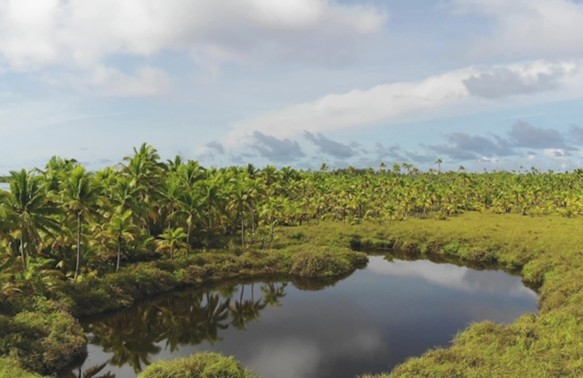
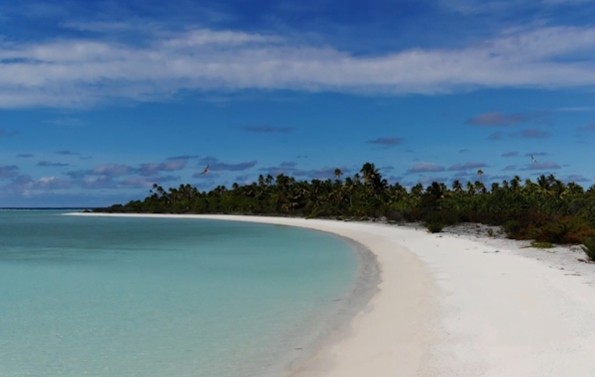
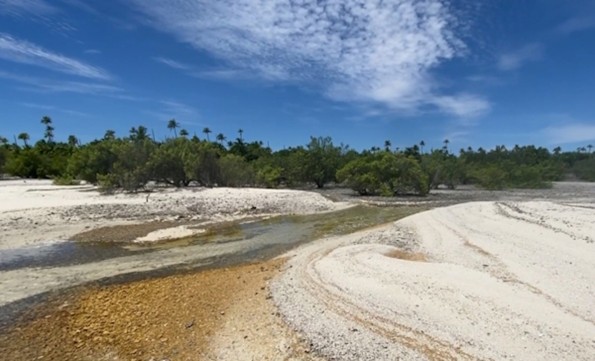
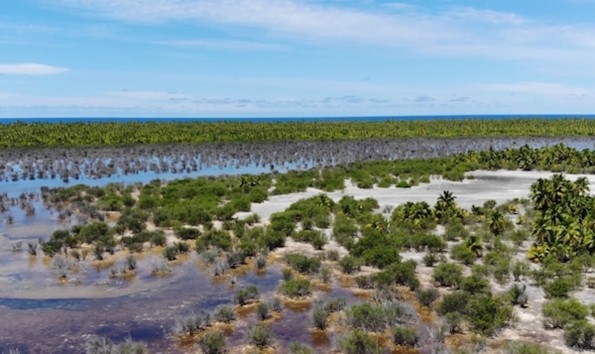
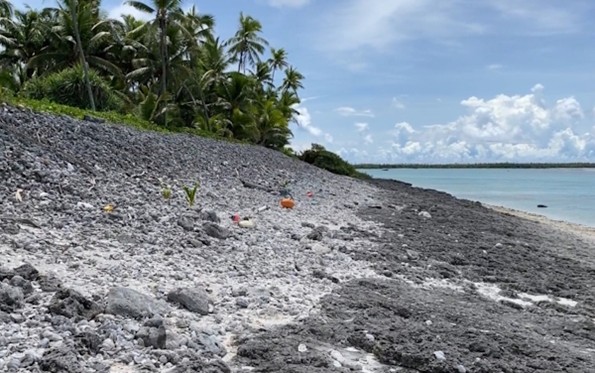
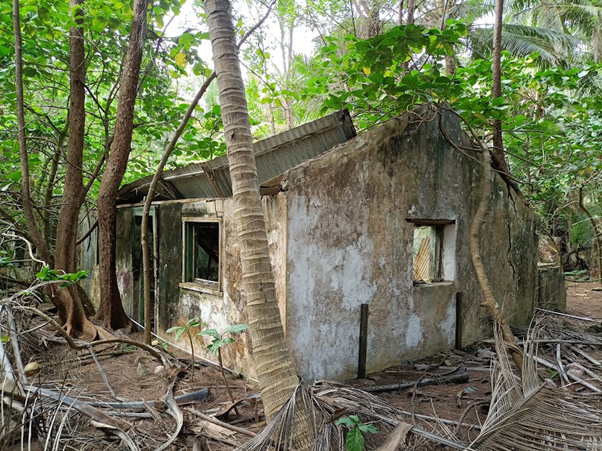
Author’s profiles
1) Teuira Ka (landowner) is Chair of the PMI and the MECT. Teuira is a retired civil engineer and lives in Reureu Village on Aitutaki Island. Teuira also worked as an official Cook Islands Māori language translator for the Cook Islands Government.
2) Capt. Dr Graham Wragg trained as a National Park Ranger in New Zealand and has worked on nature conservation projects in the Pacific Islands since 1989. Dr Wragg is married to a landowner.

